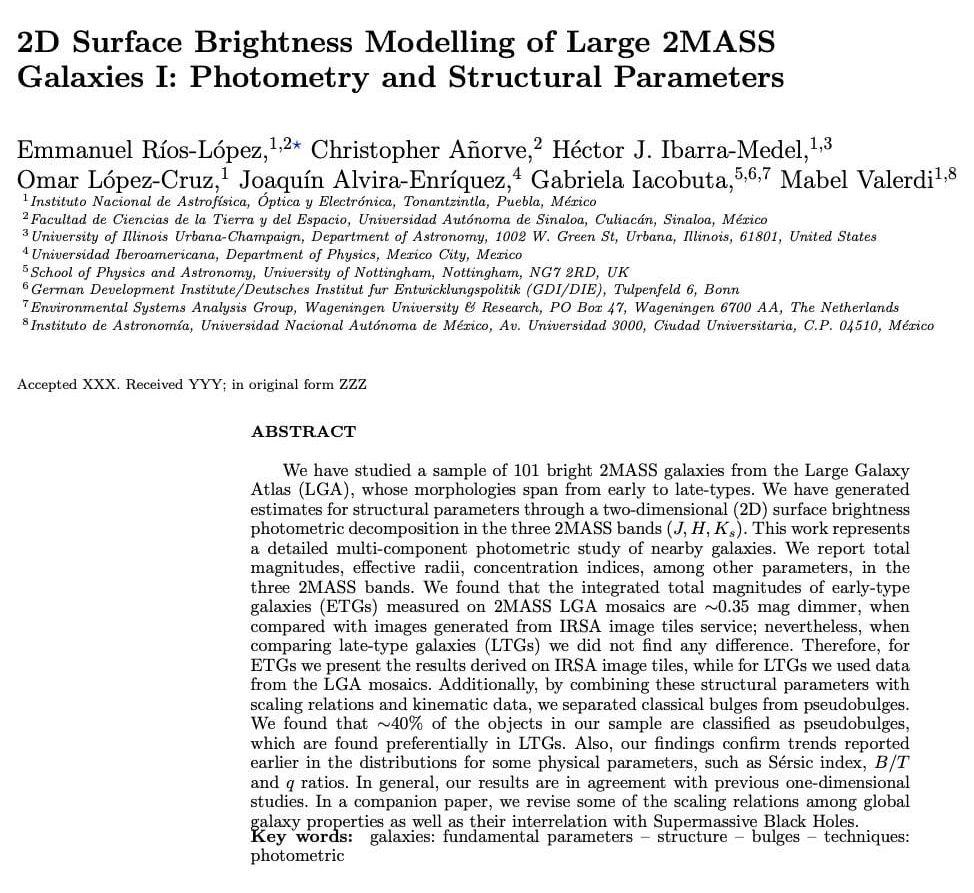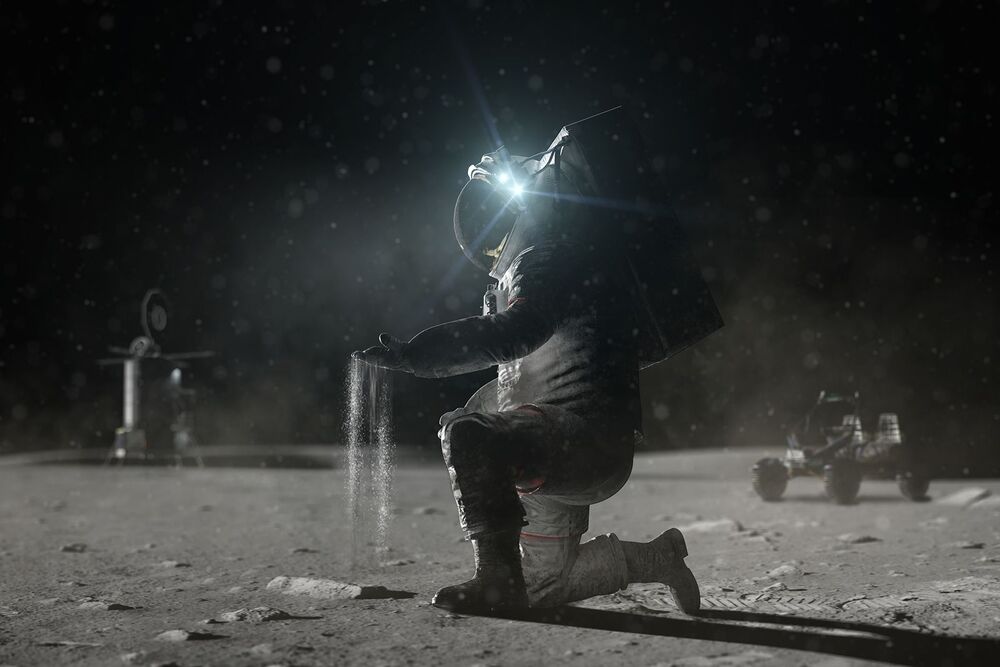Click on photo to start video.
🏢 Milan’s vertical forests’ plant life 🌱 equals 3 hectares of forests 🌳 0 maintained by “Flying Gardeners”, a specialized team of arborists-climbers.

Click on photo to start video.
🏢 Milan’s vertical forests’ plant life 🌱 equals 3 hectares of forests 🌳 0 maintained by “Flying Gardeners”, a specialized team of arborists-climbers.
Anthony Rapp (actor, Star Trek: Discovery) joins Dr. John Mather (astrophysicist), Dr. Ann Nguyen (planetary scientist), Dr. Laura Kerber (planetary scientist), and Dr. Allegra LeGrande (physical research scientist) to discuss how NASA’s research and missions help us understand how our universe, our solar system, and our Earth came to be.

Congratulations to Dr. Emmanuel Ríos López and her co-advisor Dr. X’opher Añorve and to our collaborators, Dr. Hector Javier Ibarra Medel, the Dr. Mabel Valerdi, the Dr. Gabriela Ileana Tudorica Iacobuta and the lng. Physics. Joaquin Alvira Enriquez. Three generations of summer students (VICI): Alvira-Enriquez, Valerdi and Iacobuta. Three generations of PhD students: Añorve, Ibarra-Medel and Rios-Lopez.
In this work we analyzed a sample of 101 brilliant galaxies using a two-dimensional decomposition of the shallow shine. This work serves to explore the formation of galaxies and their relationship with the supermassive holes black houses in their cores. We fixed some errors that the original sample came dragging.
We are grateful to Prof. Thomas Jarrett and Dr. Chien Peng for helping us along the generation of the work. We are standing on their shoulders, Prof. generated the Large Galaxy Atlas and Dr. Peng gave us GALFIT the best software for galaxy 2D surface brightness analysis.
We appreciate the sponsorship of INAOE, Conacyt„ Academia Mexicana de Ciencias and the Verano de la Investigación Científica del INAOE.

NASA has edged one step closer to building Moon and Mars colonies using the celestial bodies’ soil. Universe Today notes that NASA’s latest International Space Station resupply mission included a machine meant to demonstrate 3D printing regolith (that is, loose soil or rock) on the Moon and similar extraterrestrial surfaces.
The Redwire Regolith Print (RRP) project will work in tandem with an existing printer system (ManD) to try 3D printing simulated regolith. If that succeeds, the ISS crew will gauge the strength of the resulting material to see if it can handle the harsh conditions beyond Earth.
If all goes well, RRP could lead to colonists printing at least some of their habitats on-demand. That, in turn, could reduce the volume of construction supplies NASA brings to the Moon and Mars. Scientists have envisioned soil-based habitats for years, but this test is relatively realistic — it’s an attempt at 3D printing soil in lower gravity. While there will still be much work to do, the long-term goals for Artemis and future Mars missions may be that much more achievable.
Imagine a home that pay you to live in it because you can make a living out of it and grow almost all of your food in it as even sell food from it. Imagine a home that provides its own water and energy. Imagine a home concept that will work almost anywhere on Earth or in space that is cheap to build! Imagine living a high standard of living with virtually no environmental or carbon footprint whilst you retain freedoms. Imagine much less need for utilities. Imagine a home that is resilient, sustainable, can stand up better to environmental or manmade disasters. You own personal bug-in fortress. Imagine a home so green it will start an ice age! See the Greenest concept ever! Image a home you could put almost anywhere! This IS a world changing concept. Make it go viral!
You can support Galactic Gregs by supporting the sister channel Green Gregs by clicking the links below:
See the Special Deals at My Patriot Supply (great space mission food): www.PrepWithGreg.com.
For gardening in your space habitat (or on Earth) Galactic Gregs has teamed up with True Leaf Market to bring you a great selection of seed for your planting. Check it out: http://www.pntrac.com/t/TUJGRklGSkJGTU1IS0hCRkpIRk1K
Is a unique app designed to put you in the shoes of someone living with dementia. See one of the 360 clips from the experience.
http://awalkthroughdementia.org/
https://itunes.apple.com/us/app/a-walk-through-dementia/id1242267344
https://play.google.com/store/apps/details?id=com.alzheimers…a&hl=en_GB
Want to find your inner Matt Damon and spend a year pretending you are isolated on Mars? NASA has a job for you.
To prepare for eventually sending astronauts to Mars, NASA began taking applications Friday for four people to live for a year in Mars Dune Alpha. That’s a 1,700-square-foot Martian habitat, created by a 3D-printer, and inside a building at Johnson Space Center in Houston.
The paid volunteers will work a simulated Martian exploration mission complete with spacewalks, limited communications back home, restricted food and resources and equipment failures.
Commercial Sauna Vs Home Sauna.
The last year has turned all our worlds upside down.
Even if we had our diet, exercise and sauna routine locked down before, suddenly all the venues were closed, or we did not feel comfortable visiting them as they were too crowded and too enclosed.
But we can sauna at home these days, and it is relatively affordable, but are they as good as the commercial saunas we had been using?
Are sauna tents worth the money?
Are portable steam saunas, and infrared saunas as good as the professionally installed home saunas that cost a fortune, and are either of them as good as the ones we used to visit that are run commercially as established premises with all the benefits they offer?
Well, in an attempt to answer these questions, I have looked at all the pros and cons of both and dissected them to try and help you make that decision.
Whether you are rich or poor, I have considered your options and attempted to answer those questions.
So follow me, as we take a stroll into the wonderful world of getting a bit sweaty… and all so we can live longer and healthier.


Nanoracks has hired a former NASA official most recently involved with planning for Artemis to lead its efforts to develop commercial space stations.
WASHINGTON — Commercial space services company Nanoracks has hired a former NASA official most recently involved with planning for the Artemis program to lead its efforts to develop commercial space stations.
Nanoracks announced Aug. 2 it hired Marshall Smith to be its senior vice president of commercial space stations. Smith retired from NASA at the end of July after more than 35 years at the agency, most recently as deputy associate administrator for systems engineering and integration in the Human Exploration and Operations Mission Directorate.
In his new role, Smith will oversee the company’s Outpost program, which seeks to convert upper stages of launch vehicles into modules that can be used for in-space manufacturing or habitats, as well as plans to develop free-flyer commercial space stations. Smith will run the company’s new office in Huntsville, Alabama.